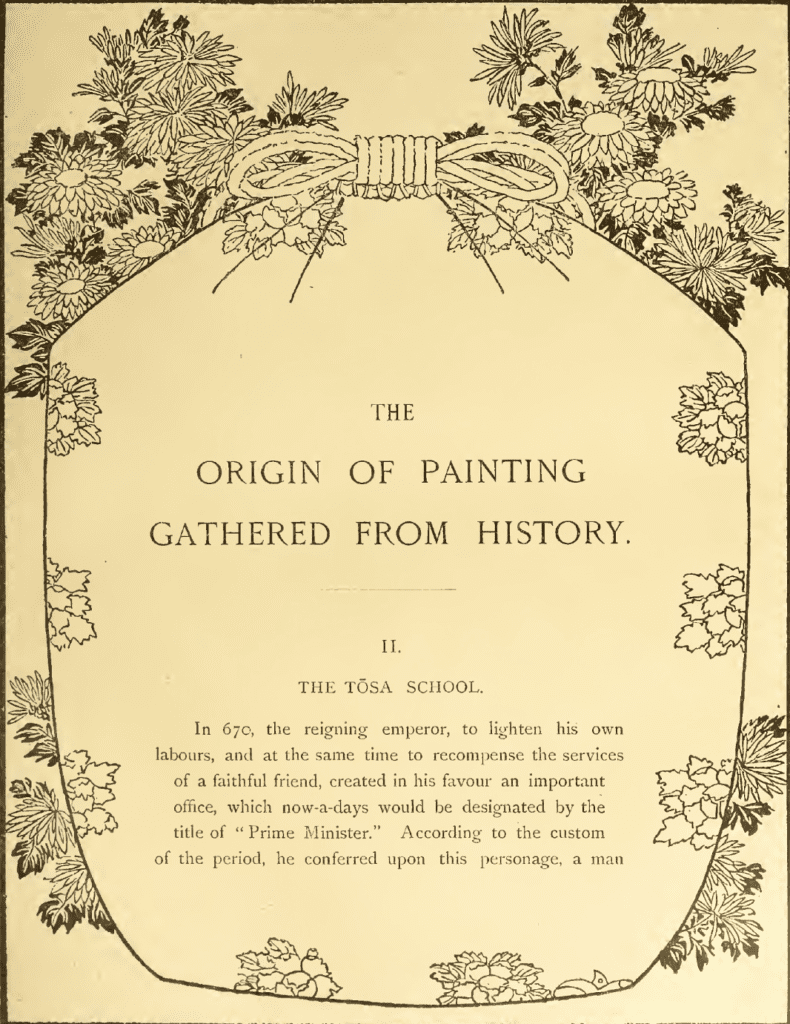 of superior wisdom and high birth, a name of his own choice for him and his family, a supreme and hereditary honour. This name, which was that of Fujiwara (field of wisterias), was destined to hold a leading position in the destinies of the country. It was not long before imperial power, which had been firmly sustained at the commencement by the favourite, was threatened by his descendants, each looking only to his own interests.
of superior wisdom and high birth, a name of his own choice for him and his family, a supreme and hereditary honour. This name, which was that of Fujiwara (field of wisterias), was destined to hold a leading position in the destinies of the country. It was not long before imperial power, which had been firmly sustained at the commencement by the favourite, was threatened by his descendants, each looking only to his own interests.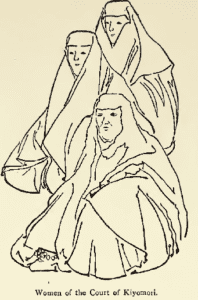
Gradually the Fujiwaras appropriated to themselves all the business of the State, completely substituting their own power for that of the sovereigns, who were from this time relegated into the background, and confined within the new capital of Kyoto, retaining only the useless title and official pomp belonging to their rank.
An old Japanese artist cleverly depicts the situation, comparing imperial power to an empty chest, whose key is jealously guarded by the Fujiwaras.
Thus it is that the Shogunate was founded, that duality in the Government which survived until the great revolution in 1868. If all the historical evolutions of a country have their counterpart in the history of its art, none other could be more fertile of effects from this cause. The influence of the new order of things was decisive from its very commencement, as it was also during the long and wearisome trials which were to burst upon the country from the eleventh century onwards. 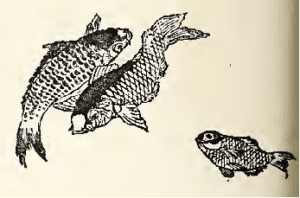 Like as the power of the Emperor had fallen little by little into decrepitude, from the incessant intrigues of the Fujiwara family, so in its turn this also became the victim of a like fate. Having no further obstacles to conquer, it lost all its energy, and in face of an ever increasing feudal anarchy, it preserved no more power than that found within the boundary of its own court.
Like as the power of the Emperor had fallen little by little into decrepitude, from the incessant intrigues of the Fujiwara family, so in its turn this also became the victim of a like fate. Having no further obstacles to conquer, it lost all its energy, and in face of an ever increasing feudal anarchy, it preserved no more power than that found within the boundary of its own court.
There came upon the field two other rival families, of no less illustrious descent than the Fujiwaras, and almost as noble as that of the son of the Sun himself. These were the Minamoto and the Taira. These two families numbered among their scions numerous heroes of the past. 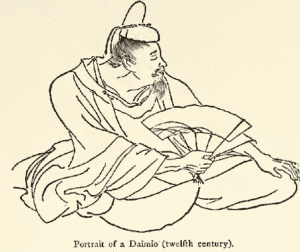 They were not the outcome of provincial insurrections, or of expeditions to foreign lands, or their names would not have shone with such an unequalled brilliancy. They had on all occasions fought as loyal subjects with the utmost bravery, and had constantly covered themselves with glory. But in the higher circles all power had succumbed. The legitimate sovereign had been overruled by officials in his own palace, who in their turn had lost all prestige, and knew not how to make themselves obeyed.
They were not the outcome of provincial insurrections, or of expeditions to foreign lands, or their names would not have shone with such an unequalled brilliancy. They had on all occasions fought as loyal subjects with the utmost bravery, and had constantly covered themselves with glory. But in the higher circles all power had succumbed. The legitimate sovereign had been overruled by officials in his own palace, who in their turn had lost all prestige, and knew not how to make themselves obeyed.
There naturally came a limit to this sort of thing, when disorder was general throughout the land, the strong oppressed the weak, the empire was unhinged, and authority had become no more than an empty name. 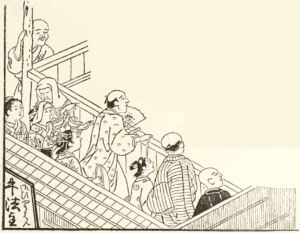 None were more worthily entitled to take over the rudder of the State than the chiefs of these two houses, for none could equal them in birth, and among the feudal chiefs none had enhanced their glory by more brilliant feats.
None were more worthily entitled to take over the rudder of the State than the chiefs of these two houses, for none could equal them in birth, and among the feudal chiefs none had enhanced their glory by more brilliant feats.
But it was not in the nature of things for these terms of equality to continue, and the question soon arose which of the two was to submit to the other. It was impossible to decide, so forthwith there raged between them a bitter war. The struggles which were destined to throw the country into dire confusion, have been compared by numerous writers to those of the Guelfs and the Ghibellines, of the Armagnacs and the Bourguignons, examples which are hardly sufficient to depict the ferocity and to mark the duration of this bitter feud.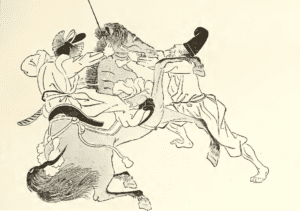
As might be supposed, so troublous a period, which handed over the country to fire and blood, was hardly calculated to give opportunity for leisure or aesthetic dreaming. But by way of retaliation, all the lyric effusions, which the events called for and were to see the light during many centuries, could not fail to prepare for the ages to come, a rich harvest of facts, worthy of being celebrated in poetry and in art. From the same cause the spirit of primitive art was modified to a remarkable extent, subjects, from that time forward, being principally selected from the numerous warlike and romantic scenes, the sight of which had impressed the mind. 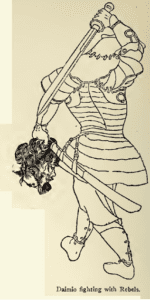 The confusion had been so general, that even convents founded for peaceful meditation, were themselves provided with arms to join in the general struggle. A small number only of beings, taking refuge with renewed fervour in the calm spheres of ideal purity, constituted themselves faithful guardians of religious tradition in art. They have bequeathed to us numerous masterpieces.
The confusion had been so general, that even convents founded for peaceful meditation, were themselves provided with arms to join in the general struggle. A small number only of beings, taking refuge with renewed fervour in the calm spheres of ideal purity, constituted themselves faithful guardians of religious tradition in art. They have bequeathed to us numerous masterpieces.
But if the terrible period was marked by furious combats and murderous scenes, if it gave rise to dark stories of vengeance, secretly planned and fulfilled by treachery, it must be added that more pleasurable spectacles were not wanting to tempt the brush of the artist. The spirit of chivalry had developed itself to an extreme point, and during this period of frenzy, the code of honour and the scorn of death arrived at that pitch which has caused the admiration of the universe and was maintained until the very last years of old Japan.
The school of painting which has represented these multitudinous phases of feverish agitation, the contests by sea and by land, the proud mien of warriors, the tournaments, the numberless crowd excited by wondrous sights—the school, in fact, which later on shows us the lord and master returned to his home in peace, and applying himself, in the bosom of luxuriant nature, to all the 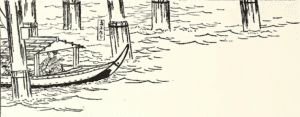 tender and poetic inclinations which a long period of ungoverned passion had been unable to banish from these most complex natures—this school is known under the easily remembered name of Tösa. The denomination is thus derived : At the time when the Fujiwara family was yet influential in the State, it had produced some men remarkable in various directions. Several of its members had distinguished themselves in philosophy, literature, or art. At the commencement of the thirteenth century one of them was a noted painter. He was the originator of an artistic centre, which threw out branches far and wide in the country, and as he was under-governor of Tösa, the name of this province remains attached to the new founded school, and was adopted by all his disciples. It was extensively developed, and has remained up to the nineteenth century under the same name, holding unchanged through centuries its original formulas.
tender and poetic inclinations which a long period of ungoverned passion had been unable to banish from these most complex natures—this school is known under the easily remembered name of Tösa. The denomination is thus derived : At the time when the Fujiwara family was yet influential in the State, it had produced some men remarkable in various directions. Several of its members had distinguished themselves in philosophy, literature, or art. At the commencement of the thirteenth century one of them was a noted painter. He was the originator of an artistic centre, which threw out branches far and wide in the country, and as he was under-governor of Tösa, the name of this province remains attached to the new founded school, and was adopted by all his disciples. It was extensively developed, and has remained up to the nineteenth century under the same name, holding unchanged through centuries its original formulas.
The painters of the Tösaschool strike one by their bold character, and their spirit, which results from a fine sympathy between their choice of subject and method of execution. Grandeur of subject, faithfully carried out with refined workmanship, constitutes a style which, essentially aristocratic, becomes the art of high born society. The product of the national soil, and antagonistic to all exterior influence, it is Japanese, parexcellence.
To see the First chapter from this series on Painting history, please click here
